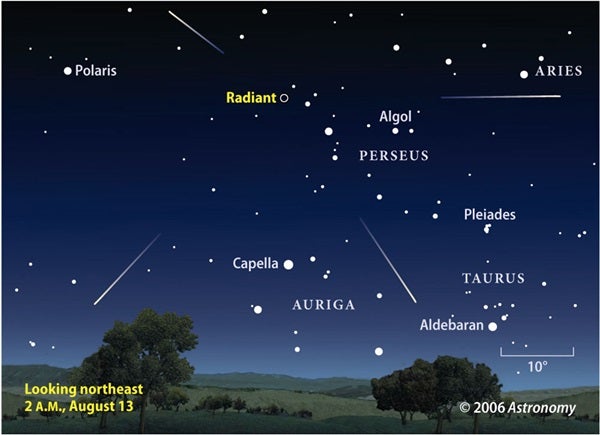The Perseids will reach their activity peak around 6 P.M. EDT on Saturday, August 12th. This is a real plus for getting friends and family out to the show.
August 12 isn’t the only date to observe Perseid meteors. This year, the shower will be active between about July 30 and August 25. Of course, fewer meteors will be visible further away from the August 12 peak.
Viewers need a clear, dark sky to see more than just a few Perseids. “Dark” means at least 40 miles (64 kilometers) from the lights of a large city. No telescope is required — in fact, the eyes alone work best.
Early in the evening August 12, set up a lawn chair, preferably one that reclines. Face east, and look a third to half of the way up in the sky. After the Moon rises, face away from the Moon, and look generally overhead. When the Moon’s disk enters the field of view (around 2 A.M. local time), turn your chair back to the east, and concentrate on an area of sky about halfway up. Glancing around won’t hurt, either.
Important items to remember when watching for shooting stars include bug spray, cookies, fruit, and a non-alcoholic beverage. Alcohol interferes with the eye’s dark-adaption as well as the visual perception of events.
How many Perseids will people see? This year, even with a bright Moon in the sky, expect to count between 20 and 30 meteors per hour.










